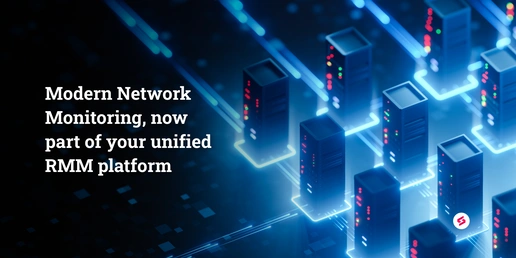The managed services business model isn't the new kid on the block. It has been a part of the channel industry for nearly two decades now. Yet, growing its revenue has been a challenge.
A report by MarketsandMarkets, states that the global market size for MSPs will go up from $USD 223.0 billion in 2020 to USD 329.1 billion by 2025. That's an excellent compound annual growth rate (CAGR) of 8.1% right there.
Despite the pandemic, the MSP market is still growing. With companies in the tech business following the momentum behind services-based practices and consulting, the MSP industry has a potential for more growth. There are more reasons for their optimism:
- The lack of IT skilled professionals
- Cost-cutting and lower IT budgets
- High cloud adoption
- Increase in automation in IT environments
- Increasing cyberattacks
- The high cost of data loss and network downtime
- Need for business continuity planning
- Expanding customer base in new markets
Here are some of the less-known hacks to grow your business revenue.
Re-evaluate vendor pricing and requirements
Most often, we tend to be swayed by brand familiarity when purchasing technology. But not all such purchases prove to meet our business requirements or add to our profit margins. Be wary of vendor licensing models that tend to appear cheap on the outside but suck you dry with hidden charges.
A good way to arrive at the true cost-per-customer is to evaluate the cost of hardware required to support your current and prospective clients. The quotes need to be sized to support multiple end customers. You might also want to account for the cost of installation, configuration, and ongoing management.
This way, you have a more realistic picture of your spending on technology and the returns you can expect.
Maximize hardware usage
More than 50% of MSPs deliver and manage their services through an internal Network Operations Center (NOC). The NOC runs on firm-owned infrastructure. Most vendors expect you to purchase proprietary hardware to gain Software-defined Wide Area Network (SD-WAN) services.
The truth is, the proprietary hardware is a white-box platform with a custom faceplate and some software to increase the sticker price. This kind of hardware inflates the cost of implementing SD-WAN for the end customer.
Choose an SD-WAN solution that is hardware agnostic so that you can buy or build the boxes based on your specifications.
Expand your team only when there is a need
Hiring additional resources in anticipation of future growth sounds optimistic on paper. But if you have technicians idling away their time waiting for customers to turn up, then you wouldn't have much to show for in terms of revenue. Expanding your team can eat into your profits even in a short time. It will eventually snowball into a blocker for your business growth.
Track your sales to forecast when you anticipate an influx of new customers accurately. Based on the information, you can decide whether you need to hire more people and how many people you'd like to add to your team.
Related reading: How MSPs can build their dream team
Leverage the opportunity in co-managed IT
Most businesses think of growth as a zero-sum game. We often think that to win a new client, a fellow MSP should lose their client. 7 out of 10 SMBs are not currently using any managed services. That's a vast, potentially unexplored market.
The complexity in the IT environment and infrastructure is continuously on the rise. There are internal skills gaps. SMBs are striving to deliver cost-effective IT services to their employees. And so, many companies are beginning to outsource parts of their IT function to MSPs. They want MSP to drive the IT strategy of their businesses.
With co-managed IT, you have a crucial role in playing the trusted partners to in-house IT teams and a massive business growth opportunity.
Use branding as a competitive differentiator
It's easy to assume that branding has something to do with the products and services you provide. If that is the case, shouldn't every MSP be identical? That means you'd have almost zero chance of standing out in the crowd. But that isn't the case! It's high time you begin seeing branding for what it truly is.
MSP Branding is an opportunity for you to showcase how you work with your customers in a way that no one else does. It's a reflection of your philosophy about technology, MSP's culture, and qualities unique to your company. You want to grab your prospective clients and get them excited about engaging with your business.
Related reading: Leveraging social media for better branding
White label wherever possible
If you're looking to add new products to your portfolio, there is no better way to do it than to offer a white-labeled product or service. Typically, these are turn-key products you use in-house, but you can offer them as a subscription to your clients.
White labeling allows you to label a third-party tool as your own. You will not have to spend time developing your product from scratch. You save a lot of money and time and use it to extend your business. Additionally, offering this service means that your clients will not need to go elsewhere for any additional products or services they require.
The most prominent benefit of white labeling is that it creates a new revenue stream for your company with the least effort.
Mergers and acquisitions (M&A)
For a while now, analysts and channel experts have neem loudly forecasting an M&A spree. Market consolidation is more than just a trend, not only for vendors but also for MSP owners.
Today, most modern-day SMBs are looking for a one-stop-shop solution for all their in-house IT needs. As an MSP, it's best not to rule our M&A. Consolidation is undoubtedly an excellent strategy for you to take your MSP business to the next level. If you are considering an M&A, it's necessary to position yourself as a lucrative business by improving recurring revenue and scalability and reducing customer churn.
Bottom line
Remember that we are in the middle of a massive business transformation. SMBs are embracing technology in a way we've never witnessed before. While the growth potential of the MSP industry is enormous, it is equally a competitive industry. To keep pace with the competition, you need to reinvent how you deliver services to your clients continually. You need to adopt various strategies that will help you set your MSP business apart from your competition.
Related reading: How MSPs can improve customer experience





